Saddling up on the Peloton Bike+ has brought me a lot of joy, and kicked my ass far more than I anticipated over the last three years. You no doubt clicked on this story because you’re looking to invest in cardio equipment for your home gym and you’re curious what the best home stationary bike is.
Peloton’s high-tech offering expertly blends cardio and strength. In a market that’s saturated with smart home gym equipment, Peloton Bike+ is a workhorse that sidesteps gimmicks and works well for families; one account covers an unlimited number of users per household. Its power lies in its accessibility and versatility.
There’s practically no learning curve to spin workouts (a downfall of ergs, where rowing form is crucial). Practically anyone at any age and skill level can give it a go, including your pregnant wife, aging father, and hyperactive teen looking to blow off some steam.
Men’s Journal aims to feature only the best products and services. We update when possible, but deals expire and prices can change. If you buy something via one of our links, we may earn a commission.
Brittany Smith
Overall Impressions
At the first date of publish, I tested Peloton Bike+ for four months, riding virtually with friends and grilling fellow members on whether they think it was a worthwhile investment. Now, it’s been three years, and my verdict on its worthiness remains the same: I’m all-in.
But, like any investment you make to your home gym, there are some caveats and things to consider before you buy. Because this is in the luxury tier of equipment (i.e. expensive), you need to do a cost-benefit analysis. If you’re someone who isn’t self-motivated and needs to book workout classes to stay accountable, you may not get the most out of a home stationary bike.
The biggest downside to Peloton Bike+ is its cost. Peloton Bike+ is $2,495 and the All-Access membership is $44/mo after the first two free months. You also need to pay more for accessories like shoes, additional weights, and a workout mat.
| Pros | Cons |
|---|---|
|
Large (23.8-inch) HD touchscreen that rotates 180 degrees |
Expensive up-front cost |
|
Small footprint |
Monthly membership fee |
|
Immersive sound |
Heavy and difficult to move to different floors |
|
Compatible with Apple Watch |
Clip-in cycling shoes aren’t included |
|
Auto-follow system keeps you zeroed-in on the workout |
|
|
Huge variety of workout types, not just cycling |
|
|
Good sense of community with ability to join Tags |
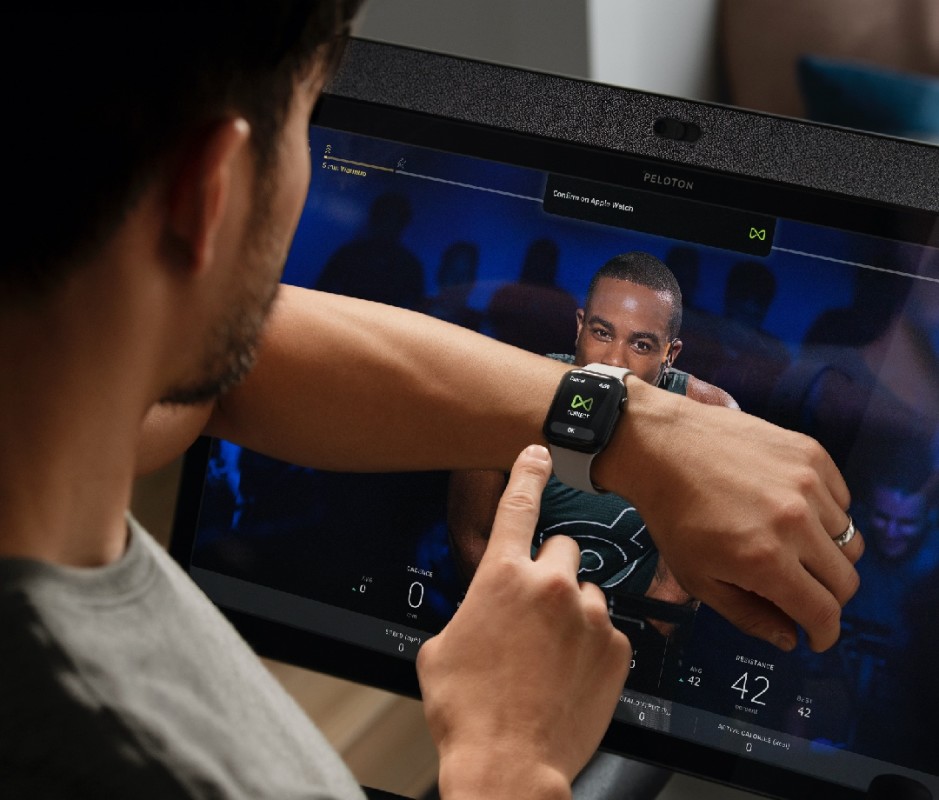
Courtesy Image
Peloton Bike vs Bike Plus
Peloton Bike+ has the same class offerings as the Bike, but there are some key mechanical differences between the rigs.
Large, Rotating Screen
Bike+ sports a 23.8-inch HD touchscreen that rotates 180 degrees in either direction for 360 degrees of total visibility. You can swivel the screen from in-the-saddle climbs to on-the-floor exercises during bootcamp classes or turn the screen to the exact angle you need for mat-based classes. The OG Bike’s screen is immobile, so you can only listen to the instructor if your workout space isn’t big enough to put your mat to the side or behind the bike (or AirPlay the workout onto your TV).
High-Fidelity Sound System
Bike+ has a high-fidelity sound system that comprises front-facing speakers and rear woofers to amp up the immersive experience. If you like to train at night, turn off the lights to replicate a studio class. If music is big for your motivation, this is a major plus; you can customize the audio feature to prioritize music or the instructor. There’s also Bluetooth compatibility if you prefer pairing with workout earbuds.
Related: Best Gym Flooring Options to Build the Home Gym of Your Dreams
Quiet Belt Drive
The belt drive is whisper-quiet, so if you’re the type to sweat at 5 a.m. before the rest of your family or roommates are up, the only sound they’ll hear is your labored breathing and the clip-clop of your cycling shoes against hardwood if you forget your headphones in the next room (for the umpteenth time).
Apple Watch Compatibility
Bike+ lets you pair your Apple Watch by tapping it to the screen via the Gymkit feature, a great way to monitor your heart rate in real time. But the biggest impetus to pony up and buy the Bike+, in my opinion, is the optional auto-follow system available during on-demand classes. Press the “lock” icon next to the resistance, and the machine automatically adjusts your resistance so you can put all your energy into burning out your quads.
Note: In terms of maintenance, you should replace the pedals annually.
The Experience: Is Peloton Bike Plus Worth It?
I’m no stranger to endurance work, EMOMs, interval training, and like to commit to a 50/50 split between cardio and strength. I’ve tested all of Peloton’s training modalities to get a feel for how efficacious the workouts are, and gleaned some tips to maximize the experience. Here’s where the Peloton Bike+ outshines other stationary bikes.
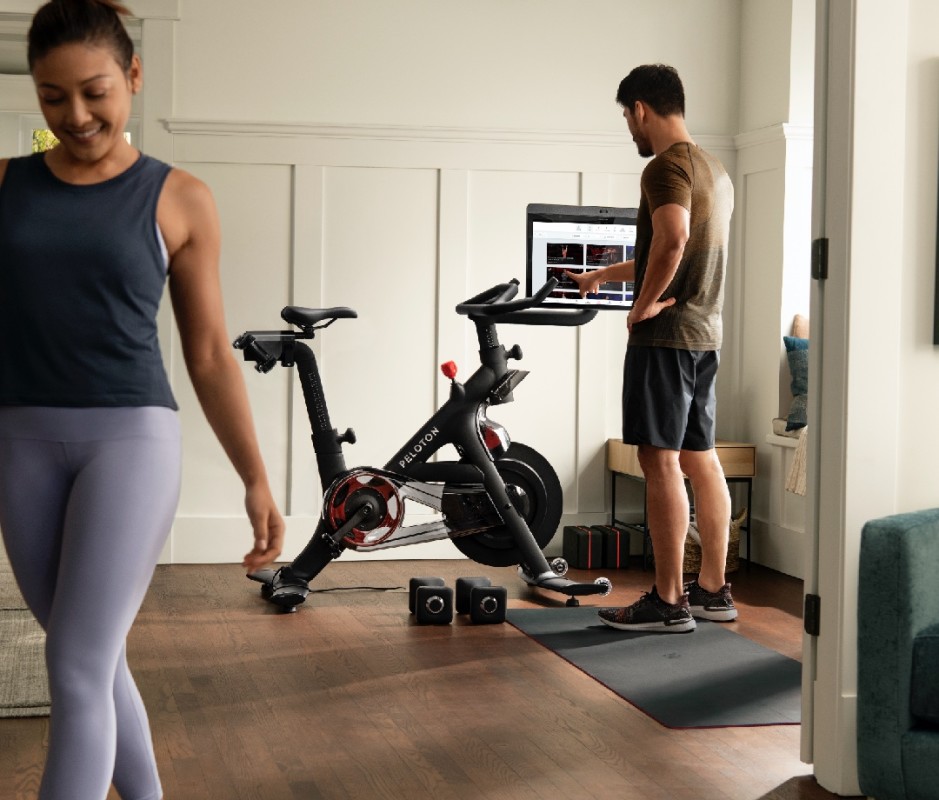
Courtesy Image
You Can Filter Classes by Music Genre, Exercise Type, Duration, and Instructor
Instead of just cherry-picking from the newest classes, you can use filters to streamline the entire library of workouts based on your day’s goal. If you’re well-recovered, go one of two ways: 30-minute HIIT and hills (filter with “Intervals”) or 45- or 60-minute endurance (filter with “Power Zone”). A 30-minute session will be a high-octane effort that ebbs and flows between hitting close to your max heart rate and recovering, while endurance will keep you pretty squarely in the 60 to 70 percent of your max heart rate for longer durations.
Write out a weekly program for yourself so you get a mix of workouts that caters to your needs and builds in enough diversity and rest/recovery to prevent burnout. Also, pay attention to the color-coded tags on Peloton’s workouts indicating beginner, intermediate, and advanced skill levels so you can scale accordingly.
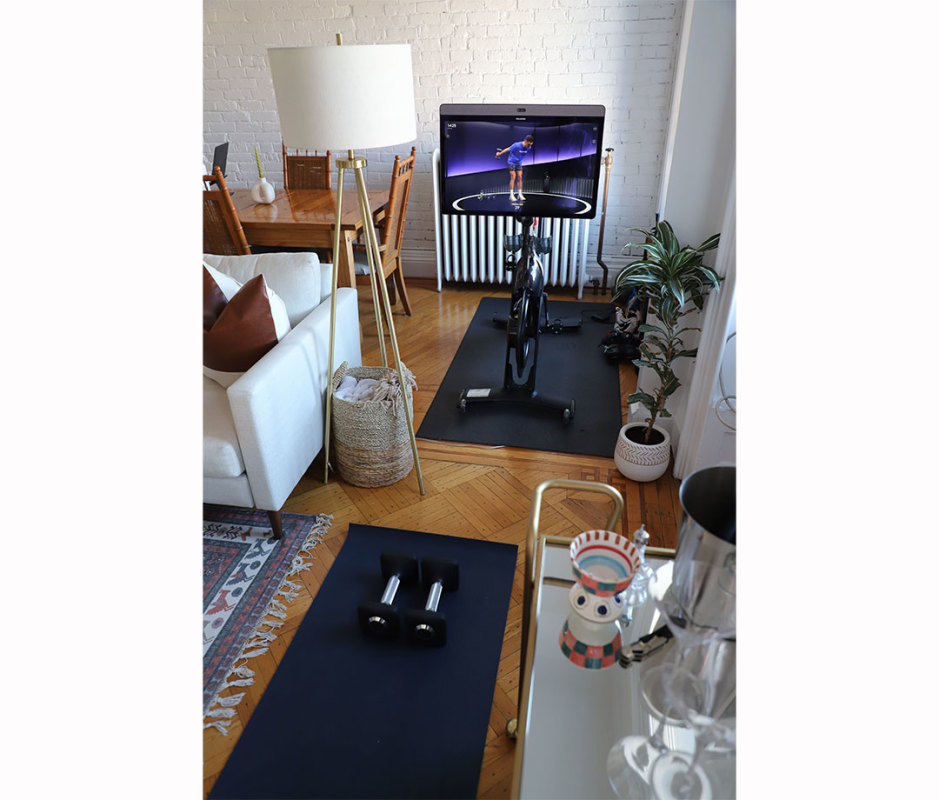
Brittany Smith
There’s a Huge Variety of Training Modalities, Not Just Cycling
Some stationary bikes are one-dimensional. You ride and that’s it. But with Peloton Bike+ you have the option to do cycling, bootcamp (cycling and strength), strength (bodyweight and with free weights), cardio, stretching, yoga, and meditation.
Here’s what a sample week might look like if you’re intermediate to advanced:
- Monday: 30-Minute HIIT & Hills Ride (with Olivia Amato)
- Tuesday: 45-Minute Full-Body Strength (with Andy Speer, Rebecca Kennedy, or Adrian Williams)
- Wednesday: Rest day
- Thursday: 45-Minute Endurance Ride or 45-Minute Pro Cyclist Ride (with Christian Vande Velde)
- Friday: 20-Minute Low Impact (with Emma Lovewell)
- Saturday: 60-Minute Full-Body Bootcamp (with Jess Sims)
- Sunday: Recovery day: 20-Minute Walk + Run (With Matty Maggiacomo), 20-Minute Full-Body Stretch (with Rebecca Kennedy), or 20-Minute Restorative Yoga (with Denis Morton)
Pro tip: While Peloton has an exhaustive amount of workouts, don’t shy away from repeating classes. Try to beat your best power output on the bike; and for strength and bootcamp classes, jot down how many rounds you complete during AMRAPs (as many rounds as possible), and how many reps you do of a specific exercise during EMOMs (every minute on the minute).
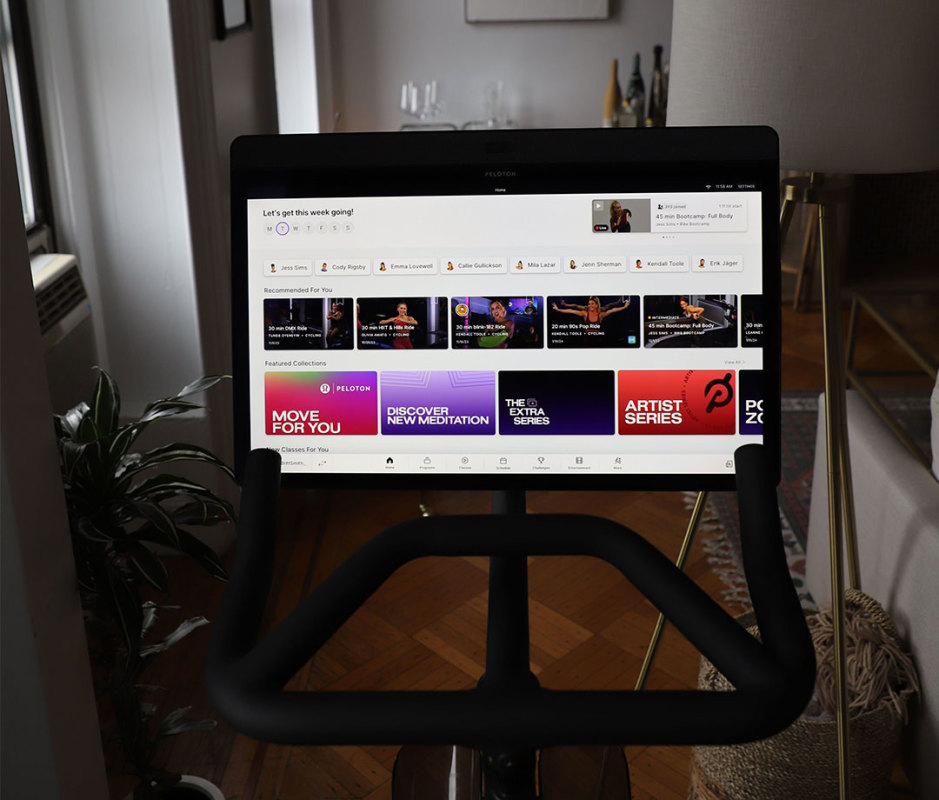
Brittany Smith
There’s a Large Roster of Instructors With Varying Personality and Motivation Types
Instructors can make or break your workout. Likewise, music dictates who you like to ride or train with. To date, Peloton has 51 instructors.
If you want something light and breezy on the bike, Cody Rigsby’s funny as hell. If you need a good walloping via bootcamp, Jess Sims is a tough-love guru who’s frank but insanely motivating sans the rah-rah enthusiasm you might be averse to. Want to learn more about technique for strength training, Andy Speer and Rebecca Kennedy are nit-picky in the best way. By trying new trainers, you’ll expose yourself to different training techniques and see what rouses you to dig deeper: spiritual enlightenment, a rowdy playlist, or an instructor who stays in the trenches with you.
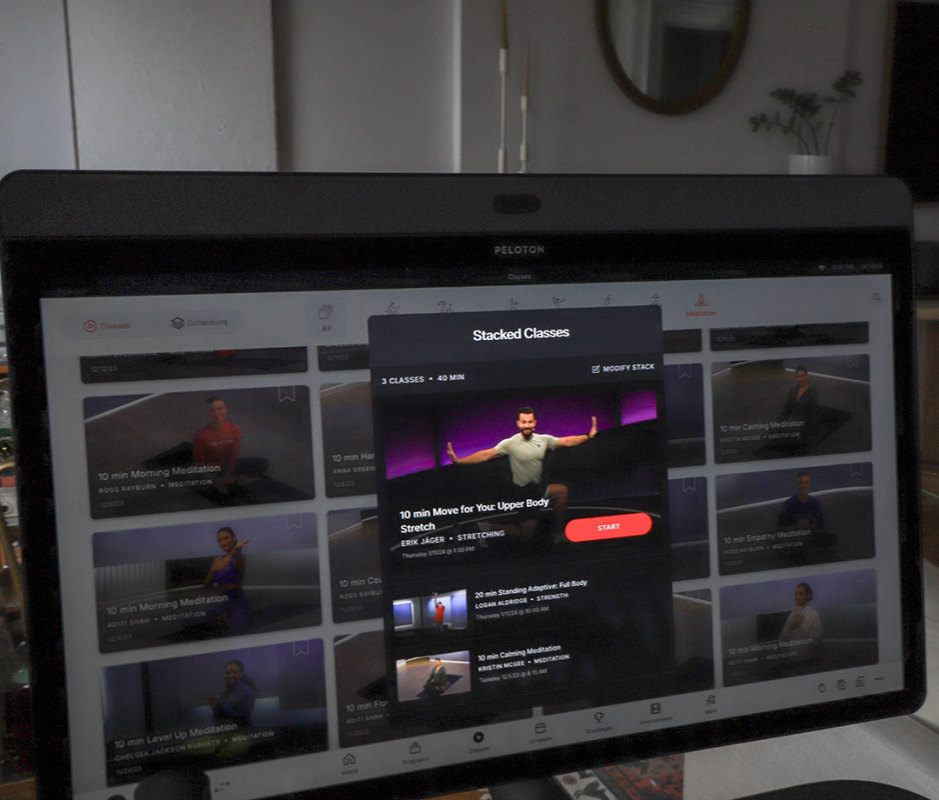
Brittany Smith
You Can Stack Your Workouts
The best way to ensure you actually warm up, cool down, and/or stretch is by “stacking” your workouts. This feature lets you sandwich classes ahead of time, nixing the down time of browsing. The more time you spend hemming and hawing over what core workout to do as your finisher, the smaller your odds are of actually doing it.
You Get a Sense of Community and Camaraderie
Working out at home doesn’t seem conducive to making friends, but Peloton has a lot of key features that foster community.
You can join certain Tags (like that of your alma mater) to connect with members who have shared interests and, of course, scratch your competitive itch via the leaderboard. But if you need the extra kick in the seat to saddle up, find friends who own a Peloton (you can search Facebook connections on the bike) and ride together.
In lieu of doing laps in a park, set up a time to do live or on-demand workouts together. You can send high-fives during difficult pushes or at the end of a grueling session. Sometimes that camaraderie (or external pressure) is all you need to show up on the mornings you’d rather hit snooze or afternoons you’d rather spend on the couch with an IPA.
Related: 18 Great Cardio Workouts That Don’t Require Running
Final Verdict
With Peloton Bike+, you have access to an interactive, engaging stationary bike that provides exceptional cardio and strength workouts without leaving home. If you’re someone who’s motivated by money—specifically, losing it—my advice is to program the workouts you want to do throughout the week, then add them to your personal calendar like you would if you were dropping into a studio or booking a class at your gym. This keeps you accountable, helps reinvigorate waning motivation if the novelty wears off and, above all else, ensures you’re not wasting money on exercise equipment you aren’t using.
Why You Should Trust Me
I’ve covered gear and health and fitness for nearly a decade as a journalist, but I’ve also covered a lot of ground as a cyclist. I’ve done four Olympic triathlons, logging countless miles on a road bike, and even completed a multi-stage 155-mile mountain bike tour through Botswana, South Africa, and Zimbabwe. Needless to say, the idea of riding a stationary bike wasn’t the most alluring, but I’ve been pleasantly surprised by how much I’ve enjoyed using the Peloton Bike+ over the last three years. After the media testing trail period, I bought the bike and it’s been a mainstay in my workout regimen since—especially during the cold, wet winter months when cycling outdoors is less than enjoyable and safe.
What We Look for in the Best Stationary Bikes for Home Use
A quick Google search will yield loads of results for the best stationary bikes. You’ll find affordable bikes void of bells and whistles, but you want to be cautious of cheap bikes. Some have poor constructions and are too light, meaning they aren’t sturdy and can actually be dangerous when riding out of the saddle. Good home stationary bikes should have multiple points of adjustment so you can get the right setup for your height and proportions, plus a sizable flywheel to ensure a smooth ride.
If you want a smart bike with a screen to view workouts, spring for one with a touchscreen so it’s user-friendly and intuitive. Moreover, if you’re trying to DIY a Peloton setup using a stationary bike, it could disassemble while in use and cause injury, so you’re better off investing in something more sophisticated.
My Testing Process
During the four-month loaner trial period, I tested Peloton Bike+ across a variety of workouts, including cycling, bootcamp, yoga, strength, and Pilates. I used the bike, on average, four to five times per week during the initial testing block. Since then, I’m on the bike once or twice per week intermixed with strength training, HIIT, and running.

